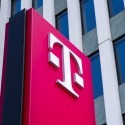
"If we're honest with ourselves, 5G really hasn't had any real impact in the US materially, to date," acknowledged the US T-Mobile network chief Neville Ray in comments Wednesday at the Mobile Future Forward event produced by Chetan Sharma Consulting.
But that's going to change, Ray said, as operators gain more spectrum and build out better and more capable networking technologies. And to encourage the development of new and innovative 5G services, Ray said T-Mobile is going to work more directly with developers via a top executive dedicated to the effort – T-Mobile's John Saw – and development centers scattered across the country.
"We really want to get that developer community engaged with us," Ray said, noting that T-Mobile already operates development centers in Kansas City – the former headquarters of Sprint – and in Seattle, near T-Mobile's own Bellevue, Washington, headquarters. "We're looking at spinning up more instances in different parts of the country."
Added Ray: "We are all ears and engaged."
In doing so, T-Mobile will join AT&T and Verizon, which both operate similar 5G development efforts. For example, Verizon counts "5G Labs" in New York City, Washington, DC; Cambridge, Massachusetts; Los Angeles and Palo Alto, California. Similarly, AT&T operates "innovation centers" and AT&T Lab locations around the country.
Ray acknowledged that most commercial 5G offerings across the US – including T-Mobile's own nationwide 600MHz 5G network – haven't moved the needle much. "They've proven to be pretty meaningless," he said, adding that "we're behind" other 5G countries like South Korea and China.
That's certainly the conclusion of a number of 5G network testers.
But Ray pointed to T-Mobile's five-year, $60 billion 5G network upgrade program as part of the carrier's efforts to turn that around. The effort centers on adding the massive trove of midband 2.5GHz spectrum T-Mobile acquired from Sprint to the operator's existing lowband 600MHz network. Ray said the resulting network will offer nationwide connections clocking in at hundreds of megabits per second, which he said would be a "real and meaningful" 5G service.
Other carriers will likely join T-Mobile in building out midband 5G via spectrum such as the C-band, scheduled to be auctioned later this year.
When questioned about the specific 5G applications that might arise from super-speedy midband 5G networks, Ray pointed to two possibilities: wearables and holographic video.
"I think wearables are going to be incredibly commonplace," he said, explaining that a wide range of technologies, including augmented reality, are already available to make wearables widely useful and attractive. The real issue is, Ray said, "how do you package that into a set of solutions that are really valuable?"
Ray joked that the real measure of latency in a wireless network is the time it takes for customers to get their phone out of their pocket and then access the information they're interested in. "It really takes time to absorb information from wireless networks and sources to date because of the smartphone and how we use it. It's way, way better than it ever was, but still."
The solution, Ray hinted, could be some kind of eyewear that instantly displays AR information to users. "Think about, real time, that information being able to come into your field of vision," he said. "That may sound like some far-fetched dream thing – that's real. I think that's going to be a very powerful space."
As for holographic video, Ray said T-Mobile is already working on the technology with a startup he declined to name. "It's super exciting," he said, adding that he believes interest in holographic video could benefit from the dramatic increases in video conferencing globally due to the pandemic.
"It's become an order of magnitude more interesting to me," he said of holographic video, which would display 3D images of a video, like Princess Leia's "you're our only hope" message to Luke Skywalker in the movie "Star Wars."
"How do you really bring to life video communication?" Ray said.
— Mike Dano, Editorial Director, 5G & Mobile Strategies, Light Reading | @mikeddano
About the Author(s)
You May Also Like











